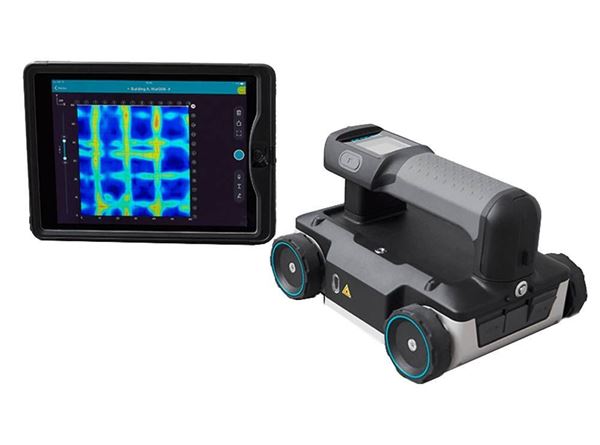Discover RainierGPR Service Areas for Reliable Concrete Scanning Solutions
Discover RainierGPR Service Areas for Reliable Concrete Scanning Solutions
Blog Article
Concrete Scanning: A Critical Action Towards Guaranteeing Structural Stability and Safety And Security
In the world of building and infrastructure maintenance, the significance of concrete scanning can not be overstated. By utilizing sophisticated modern technology and techniques, concrete scanning offers as a pivotal tool in guaranteeing that the stability and security of bridges and buildings are promoted to the highest possible standards.
Relevance of Concrete Scanning
Concrete scanning plays a critical duty in making sure the structural stability and safety and security of buildings and facilities tasks. By utilizing sophisticated modern technologies such as ground-penetrating radar (GPR) and electromagnetic induction, experts can non-destructively evaluate concrete structures to find possible problems, spaces, embedded objects, and support format. This process makes it possible for very early discovery of abnormalities that might jeopardize the security of a framework, protecting against costly problems and guaranteeing the security of passengers.
Prior to boring, cutting, or coring right into concrete, scanning assists identify the specific places of rebar, post-tension cable televisions, and other ingrained aspects, minimizing the threat of unintentional hits that can lead to architectural weak points. In addition, concrete scanning help in quality control by confirming the thickness of concrete covers and identifying any type of discrepancies that might affect the total sturdiness of the structure.
Technology for Concrete Examination

Benefits of Early Discovery
Prompt detection of architectural issues can substantially minimize threats and make certain the long life of building and construction tasks. By recognizing possible issues beforehand in the building and construction procedure, stakeholders can take aggressive actions to resolve concerns prior to they intensify into larger and much more expensive problems. Among the essential advantages of early discovery is the prevention of architectural failings, which can pose serious safety and security threats and cause job delays and financial losses.
Moreover, very early discovery enables for timely repairs and upkeep, which can aid expand the life-span of the framework. By resolving issues quickly, building and construction groups can avoid costly repair work or perhaps the requirement for early substitute of structural components. This positive technique not only saves money and time but also enhances the overall security and resilience of the construction task.
In addition, very early detection can improve task planning and decision-making by providing stakeholders with useful insights right into the condition of the framework. Armed with this info, task supervisors can make informed choices relating to construction timelines, methods, and products, bring about much more reliable image source and successful job end results.
Making Sure Architectural Stability
Guaranteeing the structural stability of a building and construction job is vital to its security and longevity. Structural stability describes the capacity of a structure or infrastructure to maintain its type and feature under environmental conditions and different tons. To accomplish this, extensive analysis and surveillance of the framework are important. Concrete scanning plays a vital duty in guaranteeing architectural security by spotting prospective concerns such as spaces, delamination, or reinforcement rust that can compromise the honesty of the framework in time.
By utilizing advanced scanning technologies like ground-penetrating radar (GPR) and electro-magnetic induction, building and construction experts can non-invasively examine concrete structures to recognize locations of worry underneath the surface. This proactive method permits the very early detection of defects or weak points, allowing punctual repair services or reinforcement to avoid structural failures.
Normal concrete scanning throughout different construction phases and throughout the life cycle of a structure can assist maintain its security, reduce threats, and make sure the safety of owners. By prioritizing architectural stability through concrete scanning, building and construction jobs can here are the findings enhance their strength and resilience, eventually adding to better safety and security and durability.
Preventing Critical Failings
Implementing routine inspections, such as concrete scanning, can expose concealed defects like spaces, splits, or rust that can endanger the stability of a structure. By using advanced scanning innovations like Ground Permeating Radar (GPR) or Concrete X-ray, engineers can non-destructively analyze the condition of concrete and determine weak points that require reinforcement or repair.

Verdict
Finally, concrete scanning plays a vital duty in guaranteeing architectural integrity and safety by utilizing innovative modern technology for very early discovery of prospective issues. This proactive approach aids prevent crucial failures and makes certain the security Homepage of frameworks. It is necessary to focus on concrete evaluation as a standard practice to safeguard the durability and safety of structures and framework.
Concrete scanning plays a critical duty in making sure the structural integrity and safety and security of structures and infrastructure tasks. Furthermore, concrete scanning aids in top quality control by validating the density of concrete covers and discovering any type of discrepancies that might influence the overall durability of the structure. Concrete scanning plays a vital duty in making certain architectural security by spotting potential concerns such as voids, delamination, or support deterioration that can endanger the integrity of the structure over time.

In final thought, concrete scanning plays a crucial duty in guaranteeing structural honesty and safety and security by making use of advanced technology for early discovery of prospective problems.
Report this page